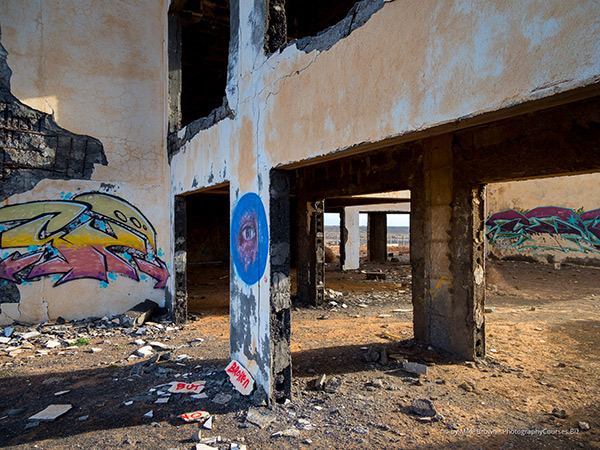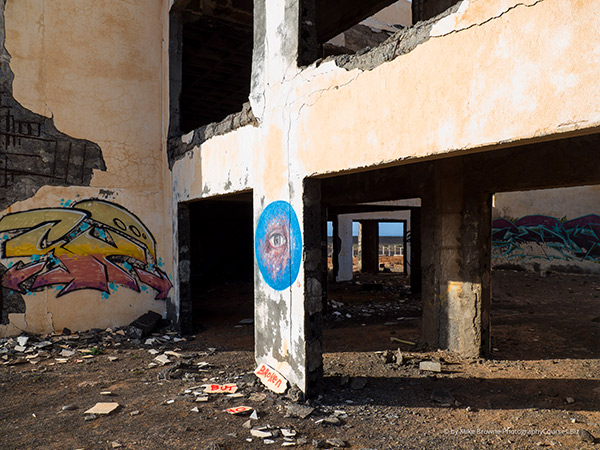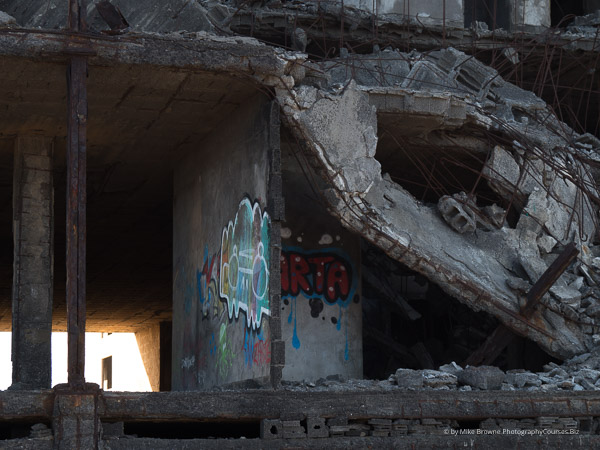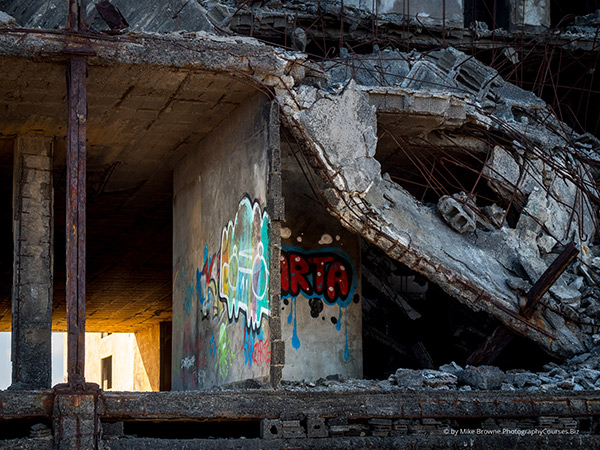How To Pre-Visualise PT2
Pre-visualising is not just about composition, there’s more. First and foremost don’t forget light can make - or break your images. You also have to previz exposure. Light and exposure are different. More on that in a minute.
In How To Pre-Visualise PT.1 I shared my thoughts and ideas about the lost hotel on Lanzarote as a location. How it could look if certain things were to happen, or I made them happen. Now we’re going back to put theory into practise and shoot those pre-visualised photos from the night before.
In this shot I didn’t think the light coming through the gap from behind could be improved upon.

I had already pre-visualised it with the light coming from the left, but as I’m a numpty, I forgot to say so in the video. As my buddy Thor who I do the Iceland workshop with says. “If you don’t go - you don’t know.” So I did re-shoot it and as you can see, it’s nowhere near as interesting.

The shadows are going the wrong way and make it look flat and dull. Light and shade are the backbone of the qualities of light. To capitalise on them you have to learn to imagine how something would look with shadows in a different direction, with none at all, softer, harder…
I guess you could call this negative previz. Imagining light and shade in the opposite direction and seeing in your mind’s eye that it wouldn’t work. The you know not to waste time on it and go check out something else. The only way you’ll learn it though is to invest enough time and effort to try it and see. Sorry, there’s no shortcut.
The more you practise the better you’ll become at this and will begin to recognise light and exposure are very different. Exposure is the amount of light required to capture all the data that makes up the image. Light qualities is the behaviour of light on the subject.
Eyes and cameras see light differently. Eyes have around 20 stops dynamic range whereas a camera has around half that. So if the dynamic range is greater than 10 stops, shadows block up and highlights burn out in high contrast situations like this one.

So first you have to know the limitations of your camera, then you can look at a situation and pre-visualise what the camera will make from it. And that will tell you whether or not you’ll need to bracket your exposures and merge them into an HDR to make it look how you saw it.

Pre-visualising is a cornerstone of successful photography and it take time to practise. You have to know the limitations of your camera as well as keep giving your imagination a seriously strong workout.
You must be able to imagine what an image would look like in your head and have the technical skills to make that reality. If you’re competent with your camera and able to manage it successfully, but your photos are lacking something. You can bet previz is part of that and your first steps to mastering it is my 7 Building Blocks Of Photography.
Until next time…
Mike

























